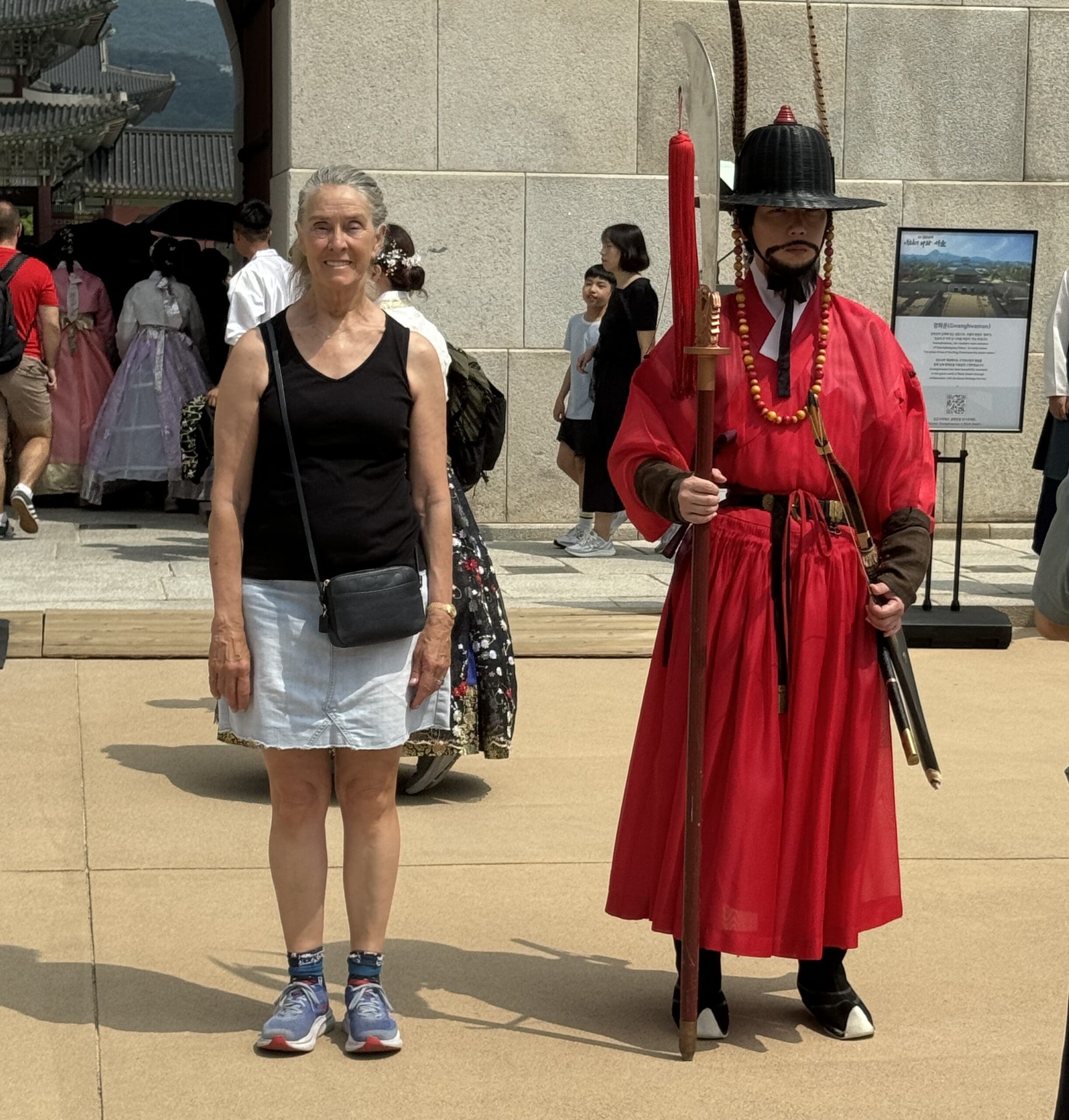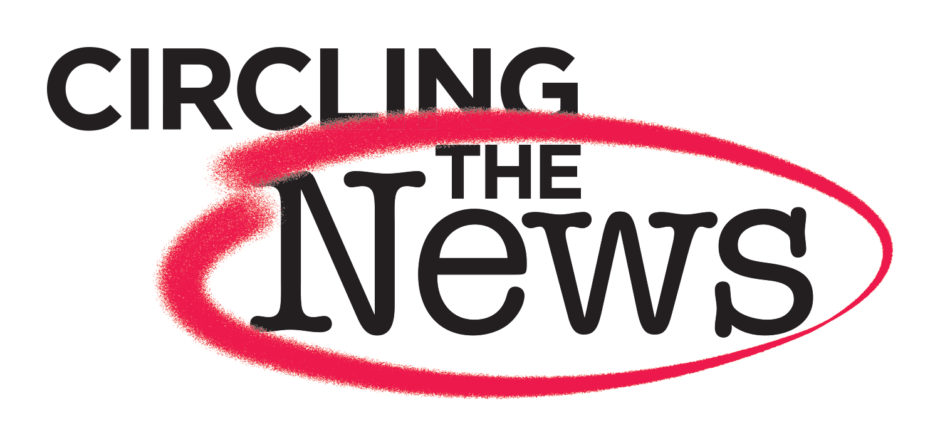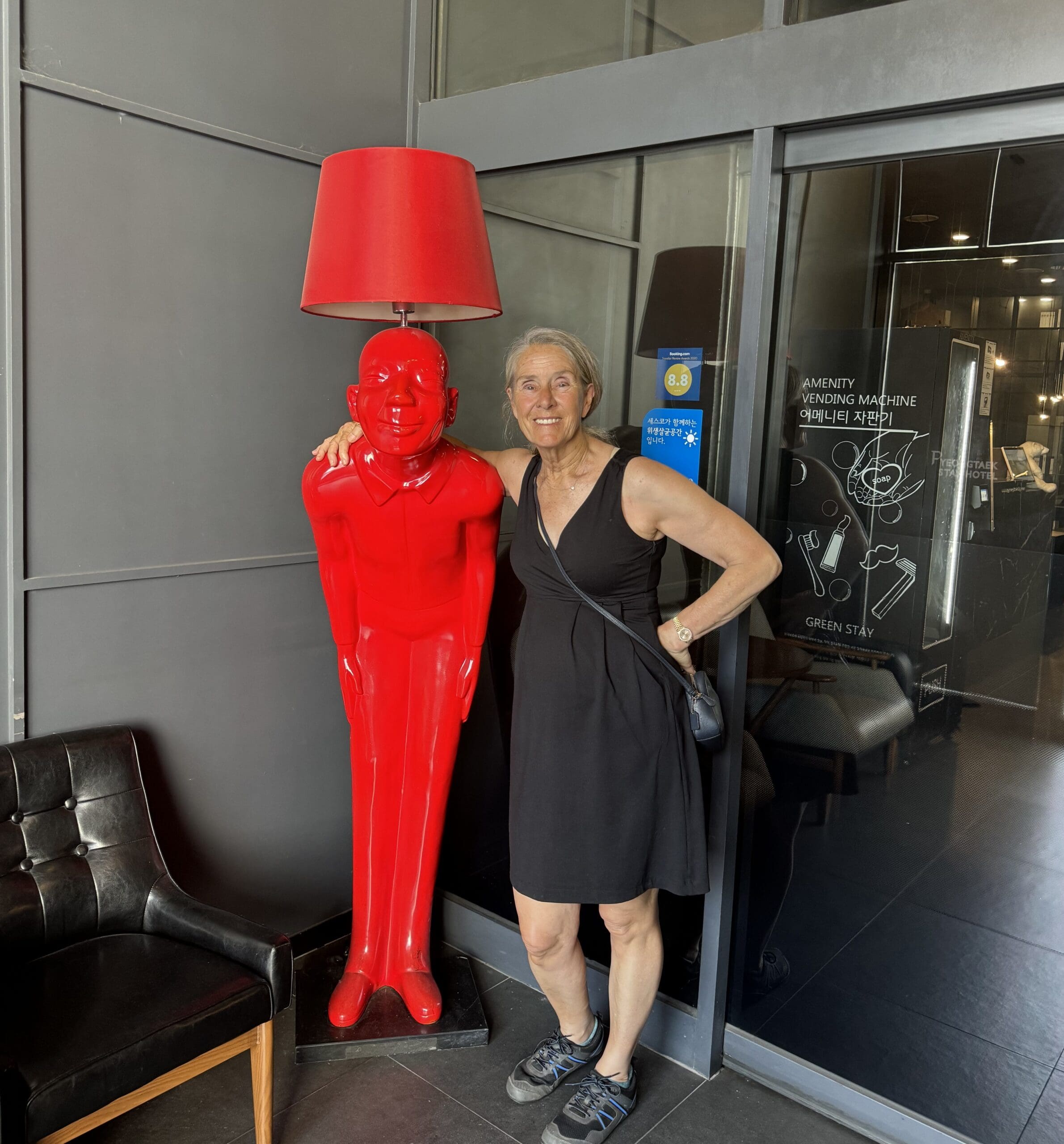If you want one of the best lattes in the world for under $5 (and no tipping allowed), visit Ediyah 이디야 커피. Unfortunately, it is a coffee chain in South Korea, making a quick visit a bit harder, but supposedly there’s also a branch in Beijing, China.
Korea was never on my bucket list to visit. I had hoped someday to visit my grandfather’s Swedish relatives in Halmsted or to visit Machu Picchu or Ned Chand Saini’s Rock Garden of Nathupur, India or the Great Wall of China, but once you have children, the place you most want to visit is where they are.
My son is in the Army and stationed in South Korea, near Pyeongtaek. When he told my husband and me that he had a full weekend he could spend with us, we cashed in frequent flyer miles and flew to Incheon on August 7. A mere 14 hours and a day later, after crossing the International Date Line, we arrived in Incheon on August 8 in the late afternoon.
The camp where my son is based is about 62 miles south of the international airport, which is in Incheon. The choices for getting near the camp were taking two buses (3 hours and 33 minutes), two trains (one hour and 33 minutes), a taxi (52 minutes) or renting a car. I figured it was worth the approximate $100 to take a cab, just for ease the first day in a new country.
Before we left L.A., I assumed that since we were close to Japan and China, tea would be the drink – meaning this coffee addict would be suffering withdrawal. No, there were coffee shops everywhere and the caffeinated drinks were pure bliss.
I also assumed that English would be spoken by at least a few people, since it was near an Army base and close to a train station – and that’s what the internet said. And the hotel we chose online, the Stay Hotel, noted that English was spoken.
Not true.
We checked in and the clerk spoke as much English as I did Korean, so Google translator came out – and would be our constant companion for the next week.
We were put in the “golf suite” on the 8th floor of a 3-star hotel ($45 a night). We had a nice view, a mini-washing machine, a refrigerator, a large movie screen for golfing purposes, a toilet with a bidet – and of course in case of a fire, we had the strap to put around our waist to rappel down the side of the building.
Most importantly, the room had air conditioning. During the entire stay daytime temperatures were in the high 90s, about 11 degrees above normal and the humidity varied between the high 80s and low 90s.
The air quality index was considered “moderate” – in the 60s, about double what is in Pacific Palisades.
On return to the U.S., a person asked if the bad air was because of smokers.
There were no smokers on the streets, in restaurants or in the train station. At some locations, there were tiny glass booth rooms set aside specifically for smokers.
The bad air is courtesy of China, Korea’s western neighbor. That country has abysmal air quality and since the wind blows west to east, South Korea is the beneficiary.
After checking in, we went looking for dinner—supposedly we were going to go to a Korean BBQ place, but the directions from the clerk, on a piece of paper without the name of the restaurant, left us wandering down narrow streets.
Giving up, we walked into an eatery. The menu on the wall was in Korean, we couldn’t get the google app to work, and finally, we pointed at what two workers seemed to be eating. One came over to help. (It seemed no matter where we went, people tried to be helpful. If they saw us struggling with the map on the phone, they would come up and try to provide assistance.)
Through much gesturing, we were able to ascertain we could either order cow’s stomach or cow’s joint in the soup. We chose joint, which was in a flavorful broth, and came with kimchi and rice.
For utensils, there was a drawer at the edge of the table, that one opened to pick out chopsticks and spoons. A small container of water/tea was served with two small glasses, which allowed you to refill your own glass.
Up early the next day, we learned that most of the population was not. Even the transit trains, Korail that operate in South Korea, didn’t leave from the Pyeongtaek station until 7 a.m. We walked into the only eatery that seemed to be open at 6:30 a.m.
There was a screen/machine to order and pay on. Photos of photos of food showed, but descriptions were in Korean. One helpful customer showed us that we could push a button that gave the title of the dish in English, but I still managed to order a pork cutlet for breakfast.
We learned that breakfast in Korea generally is the same as the other two meals and includes broths filled with vegetables, noodles or meat, rice and a side dish.
After a day of wandering around Pyeongtaek, my son joined us to go to Seoul. He was no more knowledgeable about the train to Seoul than we were, because his time had been spent at bases in different parts of the country.
Luckily, I heard a woman speaking to guy in English and introduced myself. She was from Guam, her husband from Jacksonville, Florida. They had both served in Afghanistan and met in Kuwait where they were being processed. They had been at the site, Bagram Airbase, where 11 Marines, an Army soldier and a member of the Navy were killed in 2021 when the U.S. withdrew from the country.
He was still in the Army, she was out and going to school online. They were planning to spend the weekend in Seoul and see the waterfalls by Ansan Park.
She said that google and Waze didn’t work and suggested adding Naver as an app to negotiate travel. (According to Wikipedia: More than 25 million Koreans have Naver as the start page on their default browser, and the mobile application has 28 million daily visitors. Naver has also been referred to as ‘the Google of South Korea).
Before leaving us, they helped us navigate from the train, which was air-conditioned, with lovely seats, Wi-Fi and clean bathrooms to the subway system to go to Gyeongbokgung Palace 경복궁.
She also explained about the TAP cards. To access subways, these cards which can be bought for different amounts at local convenience stores are simply tapped on the subway entrance stile.
Unfortunately, we didn’t understand that it is one card per person and when my husband tried to tap a card twice, once for him and once for our son, he couldn’t exit. Luckily, a transit worker (and they seemed to be everywhere), came over and let him out, and pantomimed that he needed his own card.
Upon arrival at the palace, I wanted to dress up in a Hanbok 한복 Korean ceremonial clothes to visit the palace, but my two companions outvoted me.

Trying to aid the palace guard, I stood at attention, too. In the background you can see tourists in the traditional Hanbok ceremonial clothes.
As we walked around this beautiful area, I was struck by no trash, no graffiti, lack of guards and total respect for the property by all visitors.
It was pointed out that there are CCTV cameras everywhere. If someone does something wrong, the person can be identified and eventually will be found and held accountable.
Next, we visited “Chinatown” in Seoul. Once again, we ordered from a screen, and took our silverware from the drawer. We had selected this eatery because we could see a cook handmaking the dumplings. Indian and Nepalese restaurants are also available in South Korea and serve excellent food.
We hopped on a tour bus, and we made our way to Namson Seoul Tower 남산서울타워, built in 1969. It is the highest point in Seoul and gave us a panorama of Seoul, which seemed to go on forever with its high rises. The city has almost 10 million residents, but we were totally impressed by how the high rises were centered around small parks/green spaces – and the number of larger parks in the City.
We located a subway line to Korail at the Seoul station and made it easily home.
Sunday proved much more difficult for navigating the subway. Before arriving at the Seoul station, we started on the Korail again, and I was seated next to a woman who was originally from Colorado and had married a man in the Air Force. They had been stationed in several places but would be in Korea for two years, because married military couples are allowed to stay in a location for two years.
They had three kids, and although there are schools on the bases, many military elect to home school, because the curriculum is “woke” and often hostile to religion. She also gave another tip that Naver Papago is much better at translating Korean than Google translate.
Tomorrow, Part 2: the subway, homelessness, the Lotte tower.










Love reading about your experiences